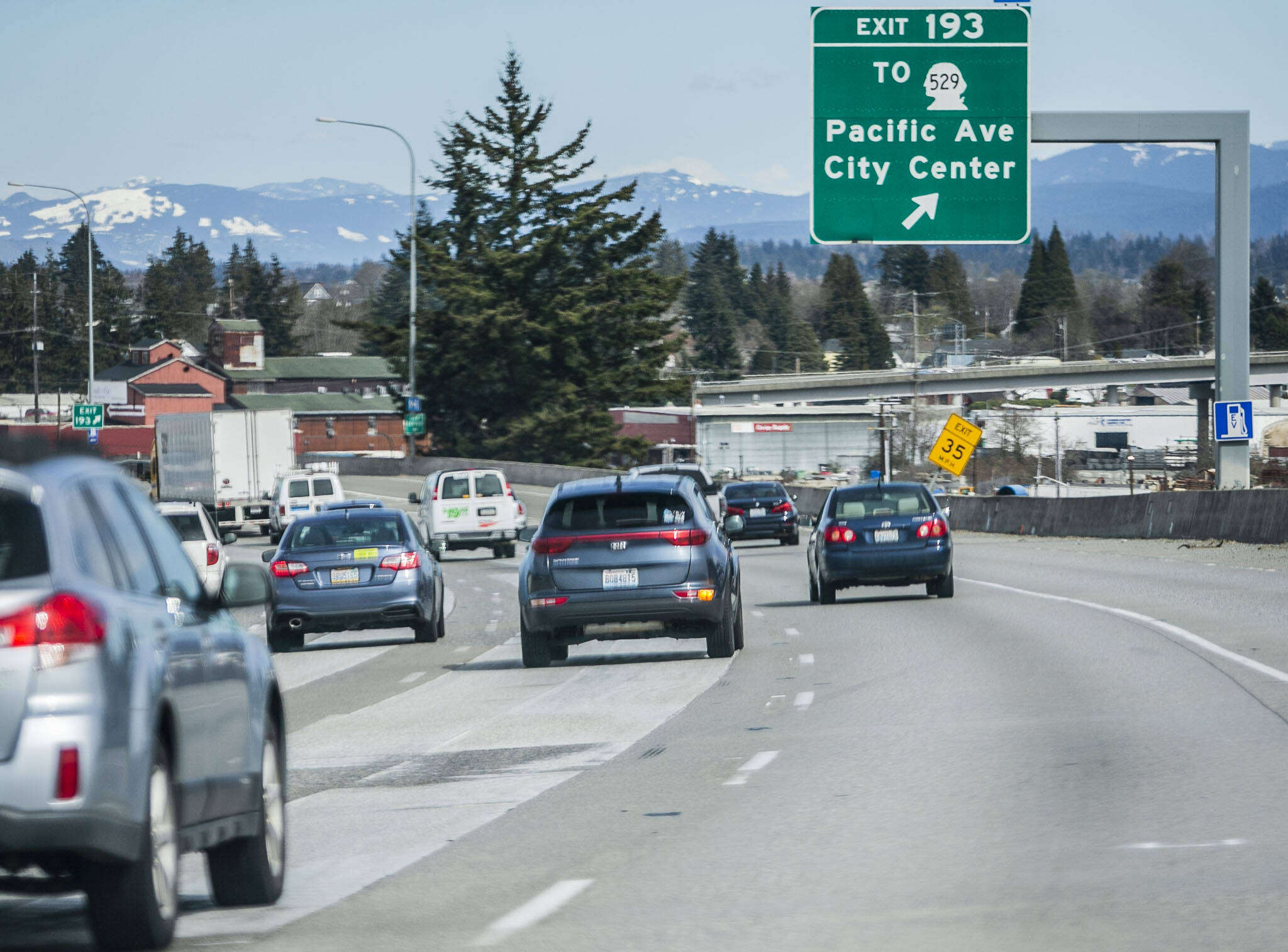Visit any elementary school and you’ll see one of the earliest principles of society in action.
Students know to form a line, take turns and not cut.
Along the way, that decorum can get murky. Some people seize the gap. Others block would-be mergers to enforce a sense of justice in a cruel and unyielding universe.
It all comes into play when drivers are slogging their way in a backed-up lane while others zip by, hit their turning indicator and hope there’s room or a generous soul behind the wheel.
Phillip Jeffries, of Monroe, has noticed this for a while during his commute in northbound I-5 traffic to eastbound U.S. 2. He asked The Daily Herald about proper merging procedure there.
Regular commuters through the area know it can become a sea of brake lights starting at Highway 526 during the afternoon and evening on weekdays. Part of the clog, aside from a daily average of 163,000 vehicles on that stretch of I-5, is the funnel onto the trestle.
Some 78,000 vehicles take the trestle on a given day. During peak afternoon times, people start to queue near 41st Street. But there’s a lot of road ahead and openings can appear closer to the exit.
That leaves the inside lane to buzz along a little faster sometimes. Some drivers use that lane to get ahead of the line and merge just in time for the U.S. 2 exit.
“Is it recommended to drive all the way up near the exit before ‘zipper merging’ right?” Jeffries asked. “Or to queue up in the right hand lane early?”
A zipper merge is a driving maneuver where two lanes become one. Drivers take turns joining the lane, like the teeth of a zipper, and use the full length of the vanishing lane for maximum efficiency.
It’s apparently challenging enough that legislators in 2021 considered making it mandatory (but didn’t) in driver’s education and testing for it during the driver license exam.
This exit technically wouldn’t be a zipper merge since both lanes are exit only, Washington State Patrol trooper Kelsey Harding wrote in an email. One goes to the trestle, the other continues a little north onto Marine View Drive.
Since the right lane becomes an exit only to U.S. 2, drivers need to be in that lane if they want to head east to Lake Stevens, Snohomish and beyond.
But it’s acceptable to use the inside lane and merge when an opening appears, as long as doing so doesn’t slow the flow of traffic, Harding wrote.
“If a driver slows traffic down or stops to merge to the right and exit they can receive an infraction for that and even be found at fault for a collision if one were to occur,” Harding wrote.
It’s legal. But Jeffries, who said he has merged early, late and in between, asked if it’s recommended.
Drivers make choices based on traffic conditions at the time, a Washington State Department of Transportation spokesperson said.
Plenty has been written about the effects of merging late, including in The New York Times and other publications.
Jeffries also brought up the potential peril of using the inside lane to pass queued traffic.
“Driving down to the merge point and needing (to get) over feels like a good way to get rear ended in the second right lane and resented by drivers in the far right lane who have been ‘waiting their turn,’” Jeffries wrote. “Yet I see people doing this every day and it seems to work out (OK).”
Beyond its mechanics, there are societal pressures perhaps preventing people from merging late more often. It can feel like cutting in line if the lane traffic wants to merge into is backed up.
A similar question arose in Tampa Bay, Florida, where ABC Action News reported the leading advice is to merge early when traffic is light and speeds are high, and merging late when traffic is heavy and slow.
Have a question? Call 425-339-3037 or email streetsmarts@heraldnet.com. Please include your first and last name and city of residence.
Talk to us
> Give us your news tips.
> Send us a letter to the editor.
> More Herald contact information.

























